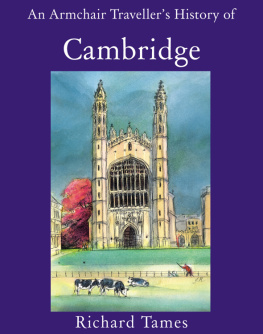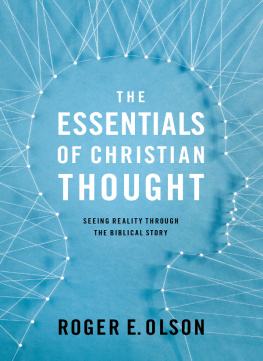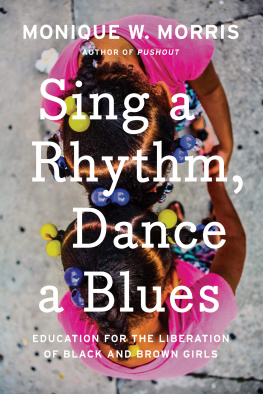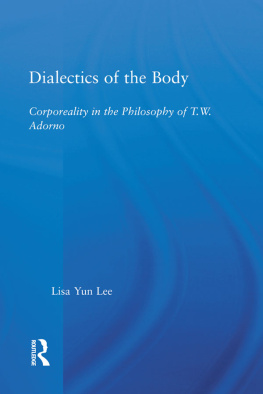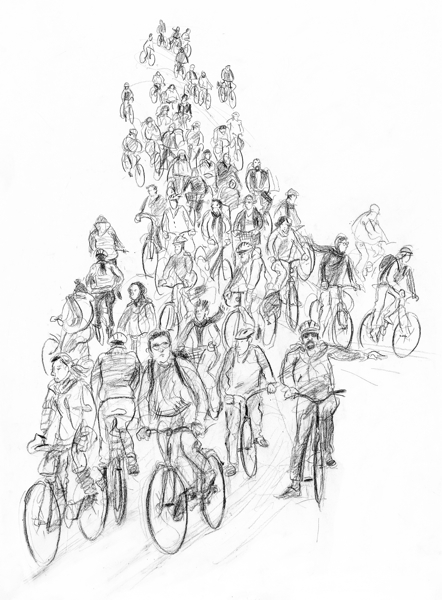Introduction
The Cambridge moment
Once a year, millions of people around the world almost two hundred million by one count focus their attention for an hour or so on an East Anglian market town at the edge of the Fens. There, in an iconic building which has come to represent the place itself, the silence of expectation is magically broken by the soaring voice of a boy soprano proclaiming Once in Royal Davids City. Thus begins, every Christmas Eve, the Festival of Nine Lessons and Carols at the chapel of Kings College, Cambridge, where the singing and the setting combine in excellence and resonance to create in the minds eye a scene of solemn joy.
The Festival is, in fact, a rather recent tradition, dating only from 1918. It was the creation of the Dean of Kings College, Eric Milner-White, DSO, a battlefront padre, who adapted an existing format some 40 years old, devised by a bishop of Truro. Once in Royal Davids City was not even in the first service but was added in 1919. The Festival was first broadcast in 1928 and has been every year since except for 1930 even during the Second World War, when the chapel was unheated and the glorious stained-glass windows had been removed and secreted away, safe from bombing, to an undisclosed location.
The Christmas carol service at Kings is not, however, typical Cambridge. Nor is mid-winter the most choice time to contemplate the city, which is then notoriously chilly, damp and windswept. At Christmas the city is almost empty of students, undergraduates at least. Nostalgic reminiscences of Cambridge, by contrast, bathe it in perpetual summer sunlight, as the American novelist Henry James did in 1883 in English Hours:
Six or eight of the colleges stand in a row, turning their backs to the river; and hereupon ensues the loveliest confusion of Gothic windows and ancient trees, of grassy banks and mossy balustrades, of sun-chequered avenues and groves, of lawns and gardens and terraces, of single-arched bridges spanning the little stream, which is small and shallow and looks as if it had been turned on for ornamental purposes. The scantily-flowing Cam appears to exist simply as an occasion for these brave little bridges the beautiful covered gallery of St Johns or the slightly-collapsing arch of Clare.
He went on to rhapsodise about the city at large:
In the way of College-courts and quiet scholastic porticoes, of grey-walled gardens and ivied nooks of study, in all the pictorial accidents of a great English university, Cambridge is delightfully and inexhaustibly rich. I looked at these one by one and said to myself always that the last was the best.
The year after celebrating its 800th anniversary, Cambridge was voted the best university in the world; the year after that it was voted to the first rank again. But whether or not it remains Number One, the university will continue to command the affectionate reverence of a faithful global gathering, who honour not only its intellectual eminence, but also its power to evoke a moment of transcendence.
What is Cambridge for?
In the words of a former editor of the Cambridge Evening News, Cambridge is both a relatively small East Anglian town and a world city. The German travel writer Peter Sager opines that even more so than with Oxford, the history of Cambridge is the history of its university. Not quite; Cambridge as a town had existed for more than a millennium before the university began to take it over, like a clerical cuckoo in a thriving commercial nest.
When the university emerged eight centuries ago, its fundamental purpose was to produce literate servants for the church and state. It has never ceased to do this, but later acquired the additional function of preserving a heritage of learning. Later still it served to mould the outlook not just of the governing elite but of the influential classes as a whole. In his Letters from England (1807) the poet Robert Southey, adopting the literary persona of a foreign traveller, explains in Letter 45 that Cambridge is there to impart not so much general knowledge as a knowledge of the world; that it is essentially a place of acculturation rather than of culture. Perhaps that is what the historian G M Trevelyan meant a century later when he declared breezily, As far as I can make out the Cambridge people are intellectual but not serious. Nowadays most Cambridge types would regard it as a serious place, teaching cutting-edge, serious subjects that make a difference in the world. Even the members of Footlights want to be seriously good entertainers.
One way to illustrate the significance of Cambridge might be to look at the people it has produced, starting with what one might call The Westminster Abbey Test. In Scientists Corner there are memorials to Newton, Darwin, Clerk Maxwell and Dirac, in Poets Corner to Spenser, Milton, Gray, Dryden, Wordsworth, Byron, Tennyson, Housman and Sassoon, and in Musicians Aisle to Orlando Gibbons and Ralph Vaughan Williams. F W Maitland has the distinction of being the first historian to be honoured with an Abbey memorial, and looming over all is the statue of Britains youngest ever Prime Minister, William Pitt.
A more contemporary version might be The Television Test, yielding such public members of the Clever Club as Bamber Gascoigne, Stephen Fry, Jeremy Paxman, Sebastian Faulks, Clive James, Germaine Greer, Andrew Roberts, Simon Schama, David Frost, Neal Ascherson, John Simpson, Roger Scruton, Claire Tomalin and David Starkey. The Top Job Test gives a dozen British Prime Ministers, two Prime Ministers of India; Jawaharlal Nehru and Rajiv Gandhi, Prime Minister of Singapore Lee Kuan Yew and Fernando Cardoso, President of Brazil. For a wider perspective one might look over the pages of the Dictionary of National Biography to register the interlocking Cambridge dynasties bearing such names as Arnold, Adrian, Butler, Huxley, Stephen, Macaulay, Trevelyan, Darwin, Gurney, Fry, Gaskell and Hodgkin.
For the quintessential Cambridge character it would be difficult to surpass John Maynard Keynes (18831946). Born in Cambridge, the son of academics, he was an undergraduate at Kings, where he rowed, played golf, won an English essay prize and served as President of the Union. He was initially anything but overwhelmed by the university Ive had a good look round the place and come to the conclusion that its pretty inefficient. As an undergraduate, Keynes bought an original copy of Newtons Principia, then went on to write a book that revolutionised the discipline (and practice) of economics, serve as a brilliant bursar of Kings, make a personal fortune out of shrewd speculations, marry a Russian ballerina, organise the financing of Britains war effort in World War Two, create the Arts Council, and design the monetary institutions of the post-war world. Significantly, the plaque commemorating his life-long commitment to Cambridge is to be found, not at the faculty of economics, but above the entrance to the Arts Theatre, which he founded and funded. The last word, however, goes to Roy Jenkins, Chancellor of Oxford, who observed sardonically of Keynes that he soon became too fond of the trains to London to be a strict Cambridge man.
Some were destined never to live out their promise as Keynes did. Frank Ramsey (19031930), son of a Magdalene don and a protg of Keynes, translated Wittgensteins Tractatus at 19 and made distinguished contributions to economics, logic, the philosophy of language and probability theory. He only ever published eight pages in his official discipline, mathematics, but these pages nevertheless spawned a whole new field Ramsey theory. Ramsey died at the age of 26 of jaundice; a militant atheist, he was spared seeing his brother become Archbishop of Canterbury.

